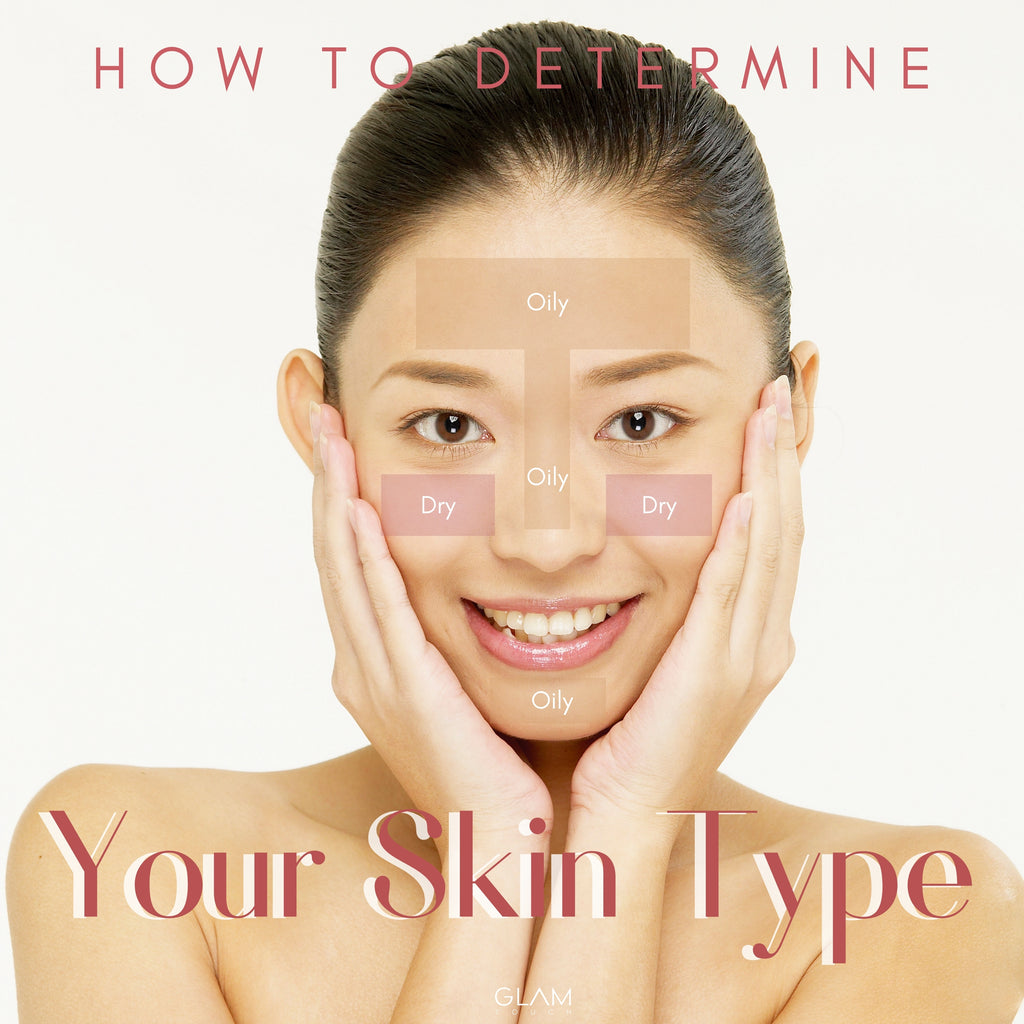How To Determine Your Skin Type
Posted by Sen Vu

The first important step in caring for your skin is to understand your skin type and how it adapts to certain circumstances and seasons. While all skin types benefit from using skin care products, which ones you will use depend on what type of skin you have. For example, applying moisturisers that are too thick or heavy can result in decreased natural oil production. Take the time to learn your skin and its specific needs will help you to choose the right products for your skin type resulting in a healthier, radiant complexion.
Although everyone’s skin is different, there are four main skin types commonly referred to as Normal, Oily, Dry and Combination skin. Skin type is determined by genetics while the skin condition can, however, vary greatly according to the various internal and external factors. While oily skin is typically prone to breakouts and large pores, dry skin type can feel tight and rough, look dull and uneven. Combination skin is, as the name suggests, skin that consists of a mix of skin types- shiny on the T-zone and dryness on the cheeks. Finally, normal skin is the well-balanced skin, has a smooth texture and radiant complexion.
Trying to identify which one you are can seem confusing, here are two easy ways to determine your skin type at home:
1. The Bare-Face Method
You can start by cleansing your face with a mild gentle cleanser, then gently pat dry. Leave skin bare, and do not apply any skincare products. After 30 minutes to one hour, observe and examine your skin for any signs of shine or dry patches. If your skin feels tight and has flaky areas, your skin is likely dry. If it appears shiny on your cheeks and T-zone, you mostly have oily skin. If you see noticeable shine on your nose and forehead, and feel dry on your cheeks, your skin is most likely combination.
2. The Blotting Sheet Method
Another way to determine your skin type at home is to blot your skin with tissue or blotting paper.
Start the same way by washing your face with a mild gentle cleanser, then wait for 30 minutes to one hour. Take a blotting sheet and gently pat it on different areas of your face. Make sure you gently pat/dab and not swipe. Hold the sheet up to the light to determine how much oil is visible. If you can see little to no oil, you most likely have dry skin. If there's oil on your T-zone, but not your cheeks, you have combination skin.If there is more oil on the blotting paper, the more likely you have oily skin.
Here is the chart for more characteristics of each skin type that may help you to identify where your skin fits in the most.

How To Care For Your Skin Type
Now that you know your skin type, you can select the appropriate skincare products to properly take care of your skin for healthier, younger looking skin.
Here are some of our top tips to care for every of your skin:
Dry Skin:
Dry skin is mainly due to genetics, external factors such as lifestyle & diet, hormonal changes, and climate. Since dry skin produces less sebum than normal or oily skin, the key to caring for it is to keep the skin barrier properly moisturised and hydrated. So drink plenty of water, and should look for formulas that hydrate and moisturise, and are free from alcohol, fragrances and harsh chemicals.
Look for the products formulated with hydrating ingredients such as hyaluronic acid, squalane, ceramide, shea butter and lactic acid.
Be sure to double cleanse every evening since the oil-based cleanser in the first step is a great way to remove excess oil or sebum, then follow with a gentle cleanser. Using two gentle cleansers are far better to combat excess oil than one harsh, drying cleanser. We recommend to exfoliate 2-3 times a week to help remove dead skin cells, and opt for products containing salicylic acid. To help detoxify skin and minimise large pores, try using a clay mask to draw excess oil away from your pores.
DISCOVER YOUR ROUTINE FOR OILY SKIN and Shop our top picks for Oily Skin
Combination Skin
Normal Skin
Luckily those with normal skin are not typically prone to breakouts, so skincare routines may be simpler. We recommend you should maintain balanced skin as hydration is the key to healthy, glowing skin. It is still essential to double cleanse your skin every evening, hydrate your skin with a moisturiser and protect your skin with broad-spectrum sunscreen during the day. You also should replenish your skin with a hydrating serum or ampoule at night. For those over 25, don’t forget to incorporate anti-aging products to your skincare routine to keep your skin youthful.
Discover Your Routine for Normal Skin and Shop our top picks for Normal Skin
Related Article:
Kasha Pye On
Dear glamtouch.co.uk owner, Your posts are always well-timed and relevant.